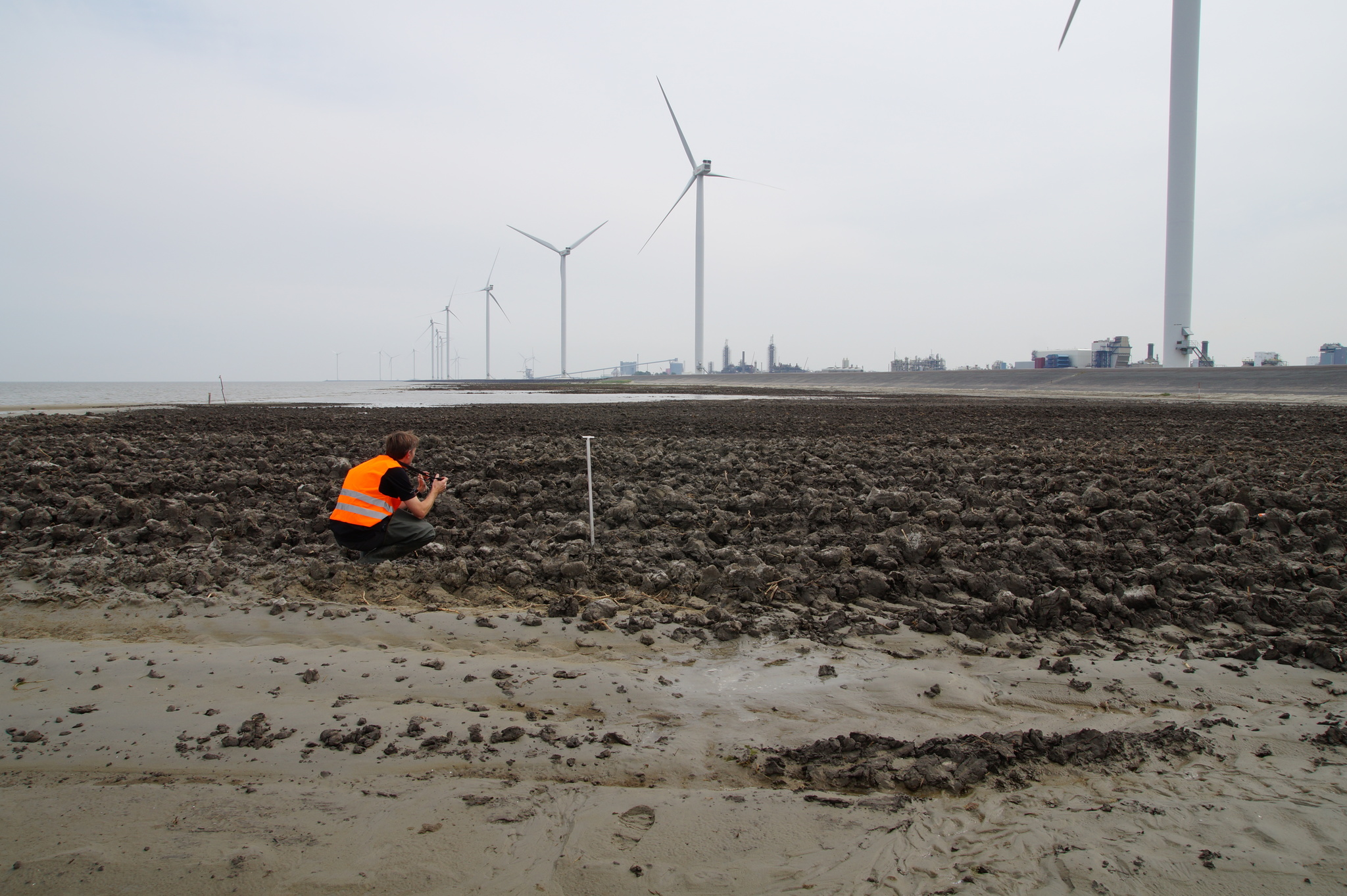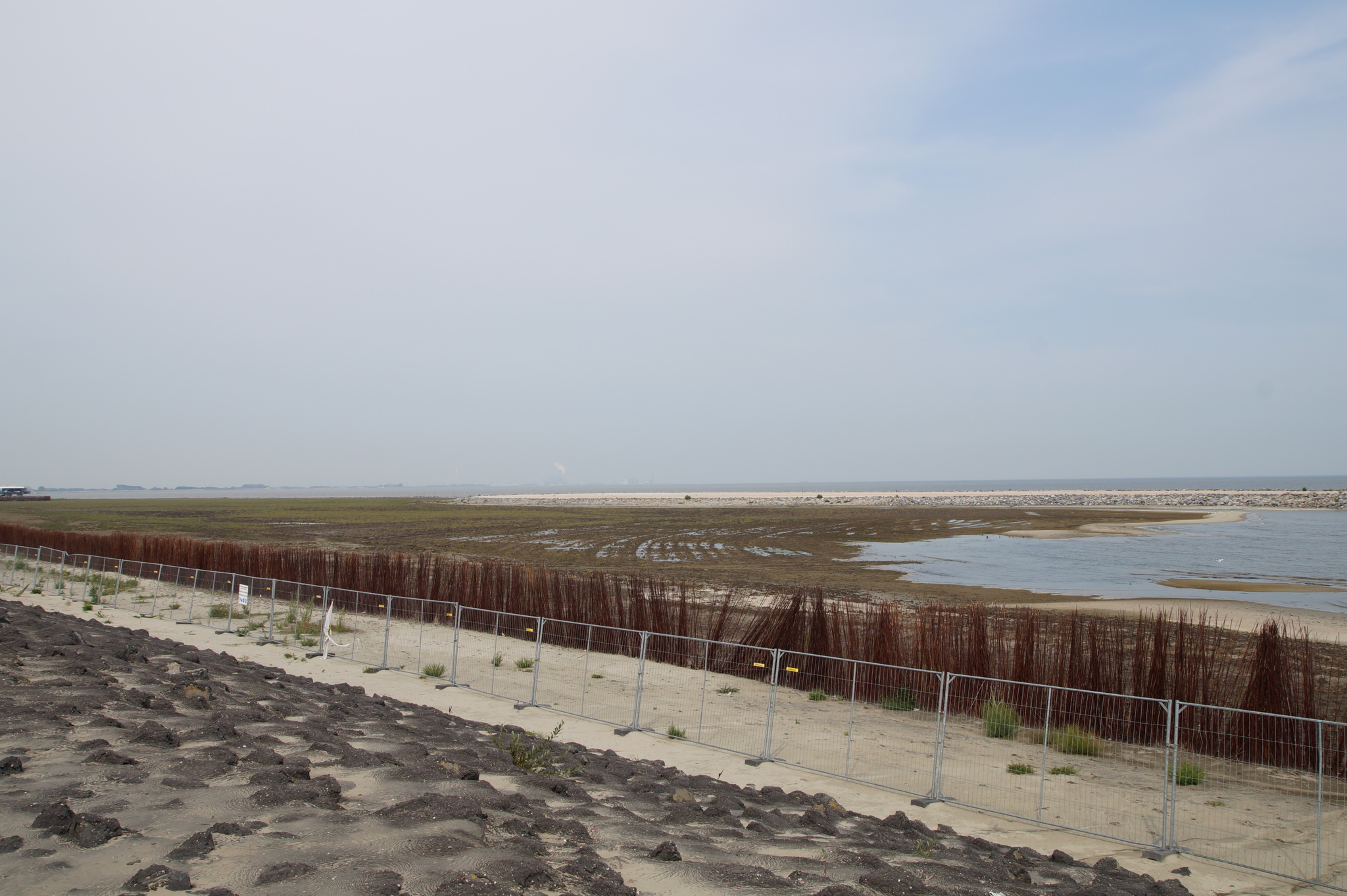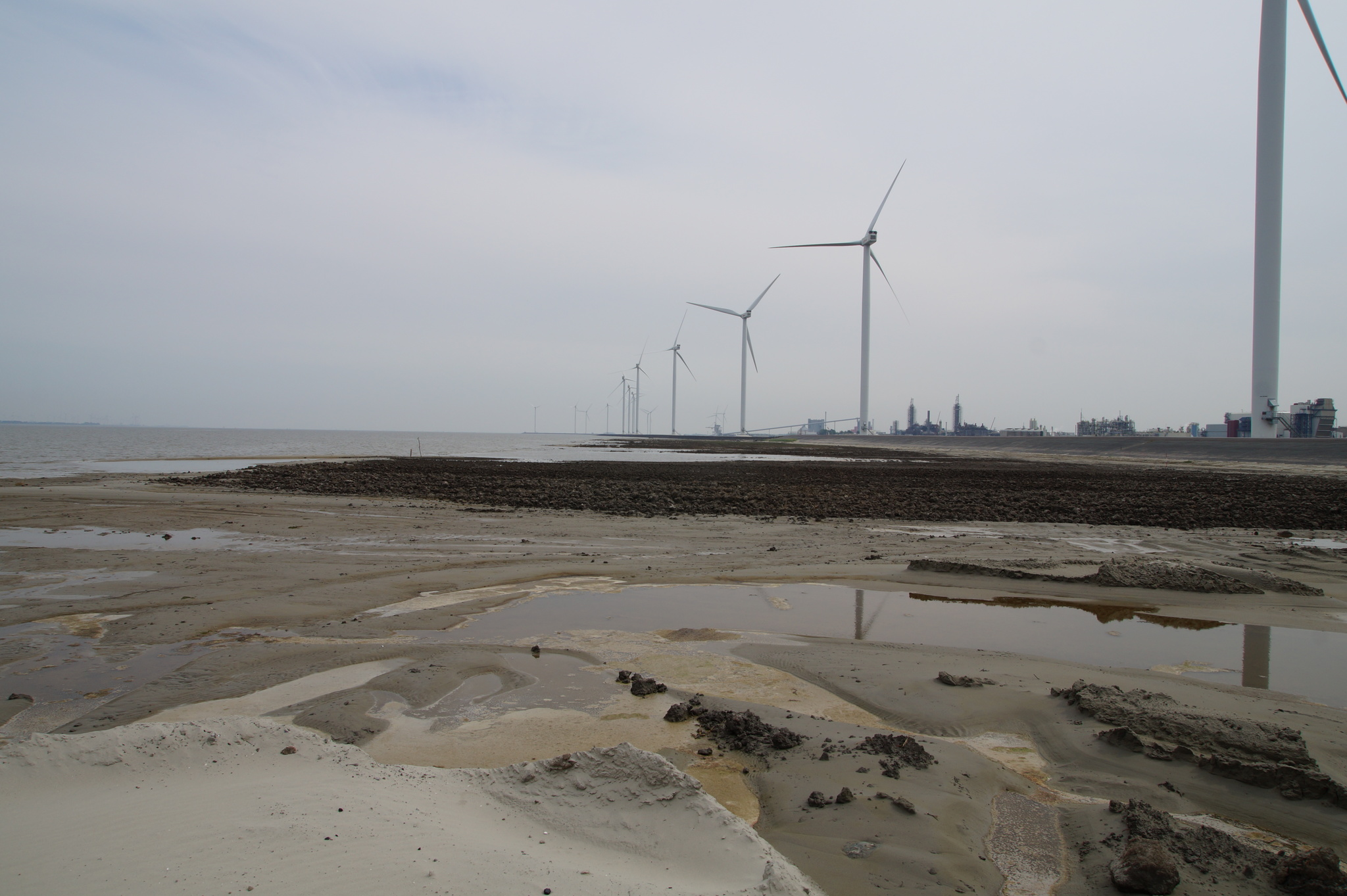
The municipality of Delfzijl faces a number of challenges. High water safety is under pressure due to rising sea levels. The ecological quality of the coastal waters is deteriorating due to a sediment surplus in the Ems Dollard estuary. At the same time, the municipality wants to increase the livability and attractiveness of the city by restoring its maritime character.
How can you address these challenges and realize these ambitions? Based on a Building with Nature approach, EcoShape partners Royal HaskoningDHV, Arcadis, Wageningen Marine Research and Deltares developed an eco-dynamic vision for the coastal area near Delfzijl with a beach, salt marsh park and salt marsh. An innovative design and monitoring plan has also been made for the construction of the salt marsh.

Work on this ‘Marconi’ project has been under way for some time now. The beach and the salt marsh park have been completed a year ago. The contractor is currently finalizing the salt marsh after which it will be handed over to EcoShape in November. Then the real work begins: monitoring the salt marsh development for 3 years, analyzing morphological and ecological development and translating it into futureproof global solutions.
The construction of the salt marsh was a big challenge because of the sandy base layer. In the recent months, clay has been mixed through the top 1 meter of this sandy material to ensure that the top layer has a sediment composition suitable for a salt marsh. Dr. Petra Dankers, project manager at Royal HaskoningDHV, explains: “Our research is focused on discovering the possibilities to construct a salt marsh and to investigate which sediment composition is suitable for good vegetation development and good morphological development. That is why we opted for different sections where 5%, 20% or 50% of clay is present in the top layer. It is precisely this desire, of a top layer with a well-mixed sand-clay mixture, such as is present in naturally formed salt marshes, that has proved to be a difficult practically feasible aspect during construction.”

The salt marsh is constructed outside the dikes where the tide and waves have free play. Therefore, we cannot justdeposit the dredged sediment on the sandy base because it would quickly wash away. In addition, it is difficult to work with large equipment on a newly constructed sand slope outside the dikes. In the end, the choice was made for the use of clay soil and not dredged sediment, which has a very high water content. The clay is deposited on the sandy slope with trucks and then ‘ploughed’ through the sandy material with a fairly unique very large ploughing machine. After several tests, it appeared that the desired clay percentages can be achieved in this way.
The last clay material is currently being applied. Afterwards, brushwood groynes are placed to give the area some shelter. Then we really can get started. Monitoring will begin this winter, primarily focusing on elevation changes, channel development and erosion and sedimentation processes. In the spring of 2019 samphire will be planted in several research sections. The samphire is currently being laid to dry in a barn.
Wondering what all this will bring? We certainly are. Hopefully we can show good results next summer.
